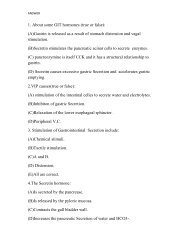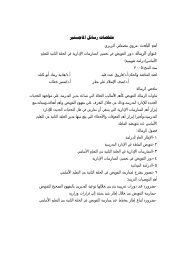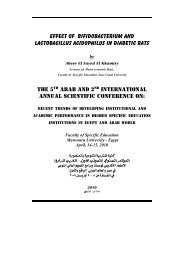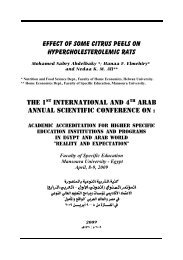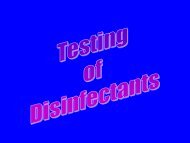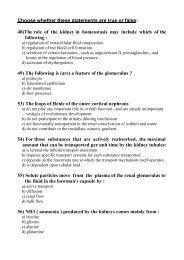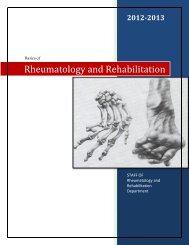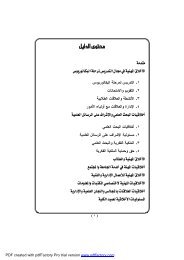2 nd MCQ (Biological Oxidation)
2 nd MCQ (Biological Oxidation)
2 nd MCQ (Biological Oxidation)
Create successful ePaper yourself
Turn your PDF publications into a flip-book with our unique Google optimized e-Paper software.
17. At sites of phosphorylayion in the respiratory chain, the minimum differencein the redox potentials of two consecutive components is:A. 0.2 millivoltsB. 0.2 voltsC. 0.42 millivoltsD. 0.42 volts18. When reducing equivalents enter the respiratory chain through NAD the P:Oratio is:A. 1:2B. 2:1C. 1:3D. 3:119. Rate of tissue respiration is raised when the intracellular concentration of:A. ADP increasesB. ATP increasesC. ADP decreasesD. None of the above20. Cyanide inhibits phosphorylation at:A. Site ΙB. Site ΙΙC. Site ΙΙΙD. None of the above21. The following component of respiratory chain is not fixed in the innermitocho<strong>nd</strong>rial membrane:A. Coenzyme QB. Cytochrome cC. Both of the aboveD. Neither of the above22. F 0 component of vectorial ATP synthetase is inhibited by:A. DinitrophenolB. RotenoneC. CyanideD. Oligomycin23. Uncouplers of oxidative phosphorylation:A. Inhibit F 0 component of vectorial ATP synthetaseB. Inhibit F 1 component of vectorial ATP synthetaseC. Make the inner mitocho<strong>nd</strong>rial membrane permeable to H +D. Inactivate cytochromes24. Extramitocho<strong>nd</strong>rial NADH can be oxidized in the respiratory chain with thehelp of:A. Glycerophosphate shuttleB. Malate shuttle



